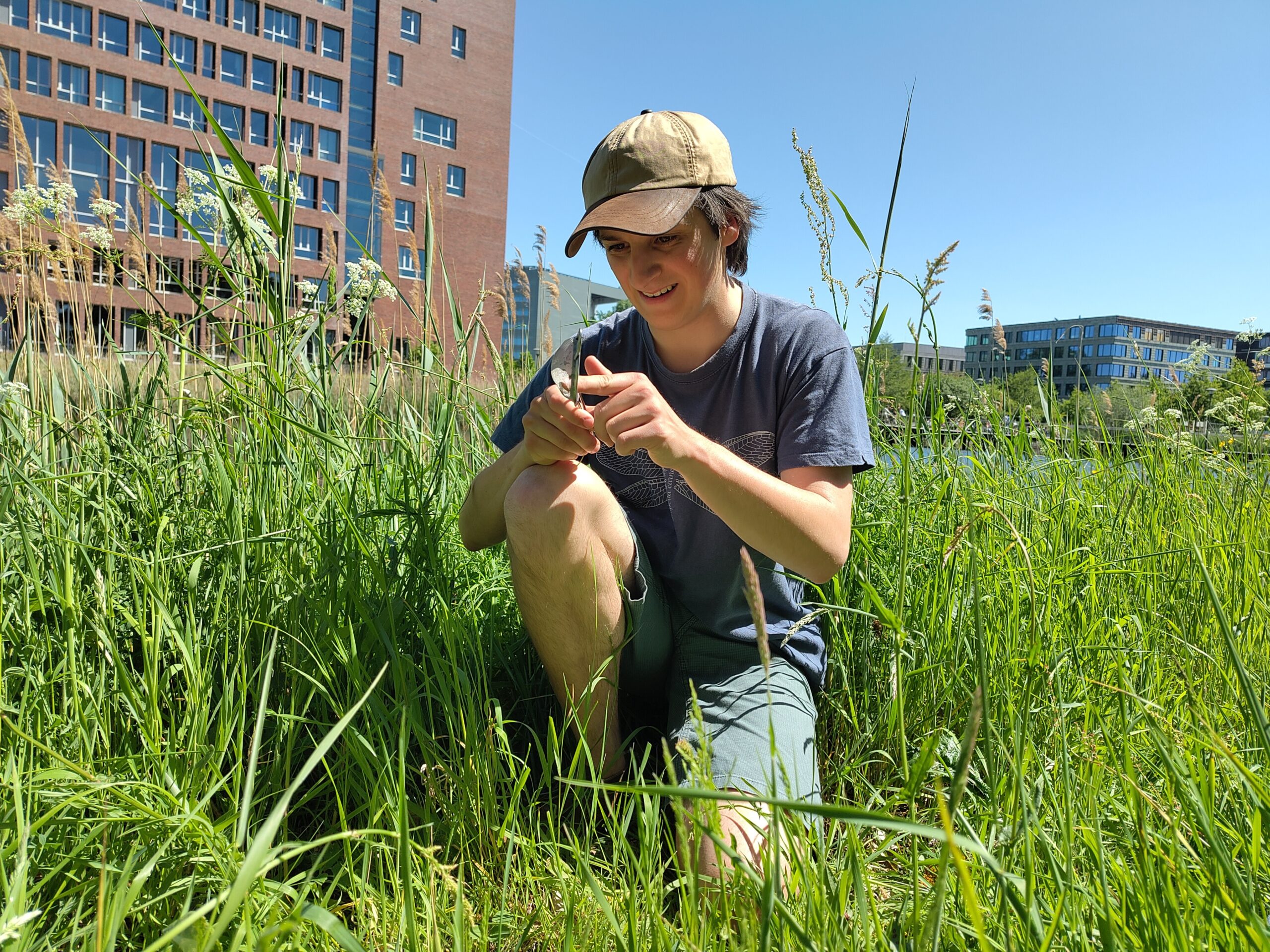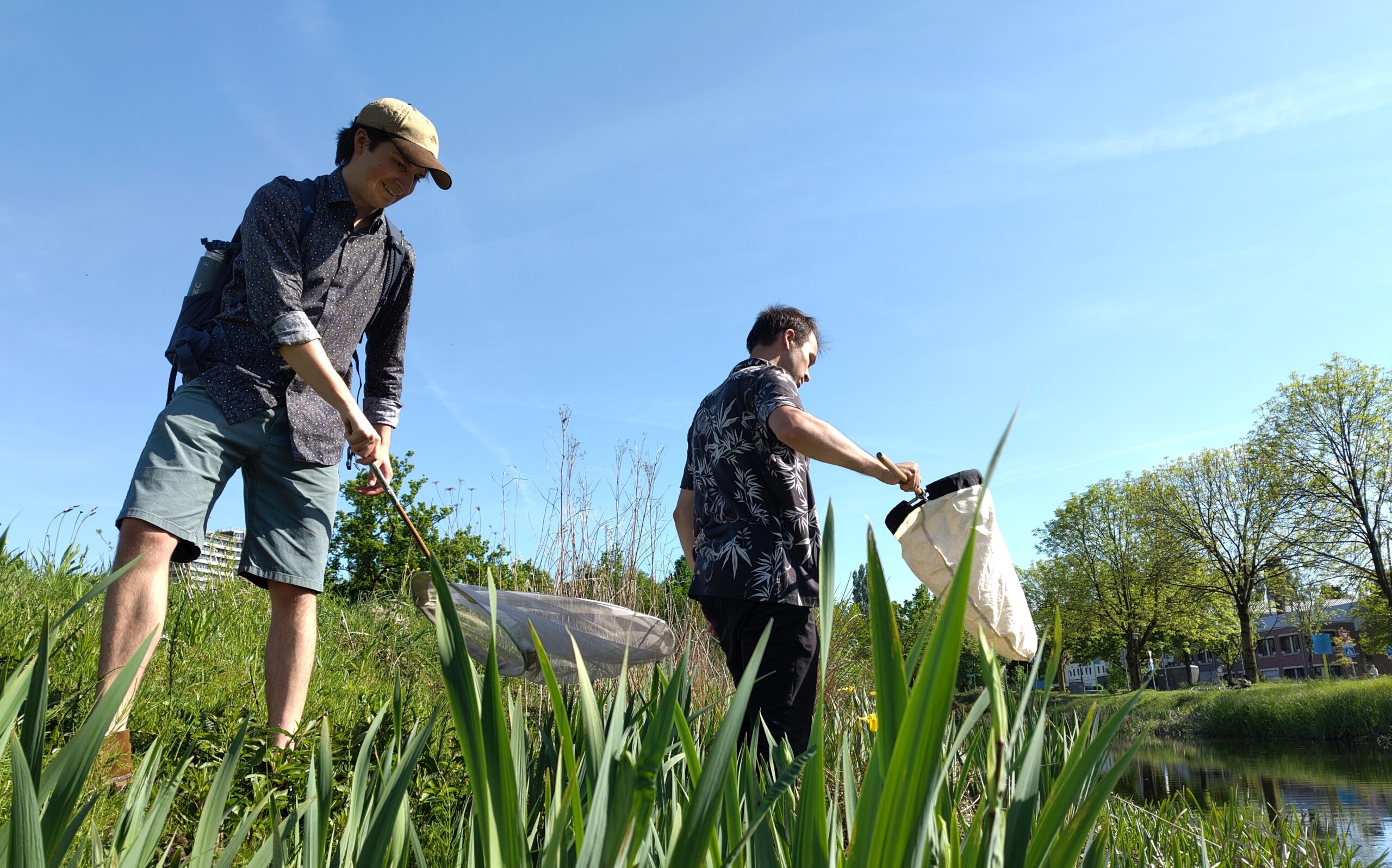It probably requires some level of insanity. Or, at the very least, a high level of motivation and expertise. And an education in biology is a big help. Seppe Rademaker, Allart Knoop, Ward in ’t Veld and Xam Menue are all of the above. This group of friends managed to identify 522 species within 24 hours in an area of just over one square kilometre.
The challenge was a simple one, initiator Seppe Rademaker explains. ‘We aimed to see as much biodiversity as possible on the campus in 24 hours.’ They dubbed their enterprise Big Day, a phrase well-known to observers. Thus, they found themselves in the Dassenbos at four in the morning last week on Monday. Rademaker: ‘I wanted to start at midnight but couldn’t convince my friends.’
Ranking
No less than 522 species were added to WUR’s Bioblitz between then and two a.m. of the following day. The Bioblitz is an inter-university challenge to identify as many species as possible on the campus. Rademakers believes that of the 522 species, some 200 were newly sighted. Others had already spotted the remaining species. It catapulted WUR to the top of the ranking, ahead of competitor Leuven.
Mapping biodiversity in the place you study is really cool
Seppe Rademaker, biology student
And that was precisely what they aimed for, says Rademakers. ‘Overtaking Leuven. Also, mapping biodiversity in the place you study is really cool. There is quite a lot of biodiversity here.’ Rademaker had another personal reason for his Big Day. ‘As an observer, I would like to take a permanent first position in the number of recorded species on campus. I was ranked 23rd and have now moved up to third position. That’s the competition.’
Obscure insects
Wageningen’s Bram de Vries ranked first with 894 species in this ‘eternal’ ranking. Alum Bas Drost, with 774 species, is second, followed by Rademakers, with 11 species less. He knows Drost well. ‘He sparked my enthusiasm for the smaller and more obscure insects. He graduated and is currently pursuing a PhD in Switzerland. I expect to head the ranking after the summer.’

The four biologists specialise in insects. In an effort to score as many as possible, Rademaker set jar traps to catch insects a few days ahead of time. They used nets to comb through the ponds. ‘There was an unrelated night-time activity organised by the KNNV National Nature Association on the Student Farm across from the Dassenbos. They had a large screen with light projected on it, which yielded a lot of moths.’
The sun didn’t come out, and neither did the flying insects
Seppe Rademaker, biology student
In the beginning, everything goes really fast, and you are constantly uploading your observations, Rademaker says. ‘By the end, it is really slow.’ They didn’t take any breaks, ‘except for dinner at cafeteria Het Ambacht. But even as we waited for our fries, we searched the planted gardens at Campus Plaza.’ Rademaker continued until two in the morning; his friends quit an hour earlier.
Repeat
522 species is a great result, but it could have been better. ‘It wasn’t a very good day’, says Rademaker. ‘The sun didn’t come out, and neither did the flying insects. That means few bees and hoverflies.’ The group will repeat the activity. ‘We will select a day with good weather this summer and go for the full 24 hours.’

 The Big Day group. From the left: Xam Menue, Seppe Rademaker, Ward in ‘t Veld and Allart Knoop.
The Big Day group. From the left: Xam Menue, Seppe Rademaker, Ward in ‘t Veld and Allart Knoop. ![[Seriously?] Something fishy about BioBlitz](https://www.resource-online.nl/app/uploads/2025/05/WEB_DeNeusUK.png)

